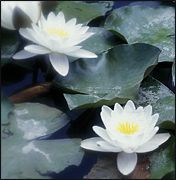Whether you accept it, avoid it or live somewhere in between, insurance coverage has become a defining issue for our profession. Patients increasingly expect to use their benefits, practitioners want to be compensated fairly for their time and expertise, and the system itself remains – at best – fragmented. The encouraging news is that coverage has expanded in meaningful ways. The challenging news is that reimbursement, across the board, remains inadequate.
Herbs & Botanicals
Lily Bulb (bai he)
What is lily bulb? What is it used for?
Lilies are among the oldest cultivated plants in the world. Native to east Asia, lilies are now found worldwide, and have been used in herbal preparations and medicines for centuries.
As far back as the second century BC, lilies were used in medicinal ointments in some parts of Asia; the ancient Greeks and Romans also grew lilies for both medicinal and ornamental purposes. Today, the lily is still grown in China as a food, an ornamental plant, and for medicinal purposes.
Although they can be grown from seeds, lilies are usually raised from bulbs. The bulbs are used in herbal remedies. They are traditionally gathered in the autumn, then cleaned. After being cleaned, they are washed in boiled water or steamed, then lightly baked, fried with honey, or dried in the sun. Most lily bulbs are white or slightly yellow in appearance, and have a slight or no odor.
Modern research has found that lily bulbs contain a variety of substances that can promote health and well-being. In addition to proteins and starches, lily bulbs have small amounts of calcium, iron, phosphorus, and vitamins B1, B2 and C.
 According to the principles of traditional Chinese medicine, lily bulbs have sweet and slightly cold properties, and are associated with the Lung and Heart meridians. Lily bulbs are used to relieve coughs, dry throats and other respiratory conditions, to clear away heat, and to treat insomnia and heart palpitations. Its tonic properties make it a good herb for promoting restful sleep and treating restlessness and irritability. Lily bulb is often combined with other herbs, such as scrophularia, rehmannia root, and anemarrhena.
According to the principles of traditional Chinese medicine, lily bulbs have sweet and slightly cold properties, and are associated with the Lung and Heart meridians. Lily bulbs are used to relieve coughs, dry throats and other respiratory conditions, to clear away heat, and to treat insomnia and heart palpitations. Its tonic properties make it a good herb for promoting restful sleep and treating restlessness and irritability. Lily bulb is often combined with other herbs, such as scrophularia, rehmannia root, and anemarrhena.
How much lily bulb should I take?
The typical dose of lily bulb is between 10 and 30 grams per day. The bulbs are boiled in water as a decoction for oral administration. Depending on the condition, some practitioners may recommend much greater amounts of lily bulb; in patients who have a cough and profound amounts of phlegm, up to 200 grams of lily bulb may be used.
What forms of lily bulb are available?
Dried raw lily bulbs are available at many herbal shops and traditional Asian markets. Some stores may also sell powdered lily flowers, which can be used externally to treat cuts and bruises.
What can happen if I take too much lily bulb? Are there any interactions I should be aware of? What precautions should I take?
As of this writing, there are no known side-effects or drug interactions with lily bulb. The American Herbal Products Association has given lily bulb a class 1 rating, meaning that it can be safely consumed when used appropriately. However, it should no be taken by patients with severe diarrhea. As always, make sure to consult with a licensed health care provider before taking lily bulb or any other herbal remedy or dietary supplement.
References
- Flaws B. Chronic fatigue syndrome. Acupuncture Today, March 2002.
- Gruenwald J, Brendler T, Jaenicke C (eds.) PDR for Herbal Medicines. Montvale, NJ: Medical Economics Company, 2000, pp. 804-805.
- Masterova I, et al. Phytochemistry 1987;26(6):1844.
- McGuffin M, Hobbs C, Upton R (eds.) American Herbal Products Association's Botanical Safety Handbook. Boca Raton, FL: CRC Press, 1997, p. 70.
- Teeguarden R. Radiant Health: The Ancient Wisdom of the Chinese Tonic Herbs. New York: Warner Books, 1998, p, 213.


